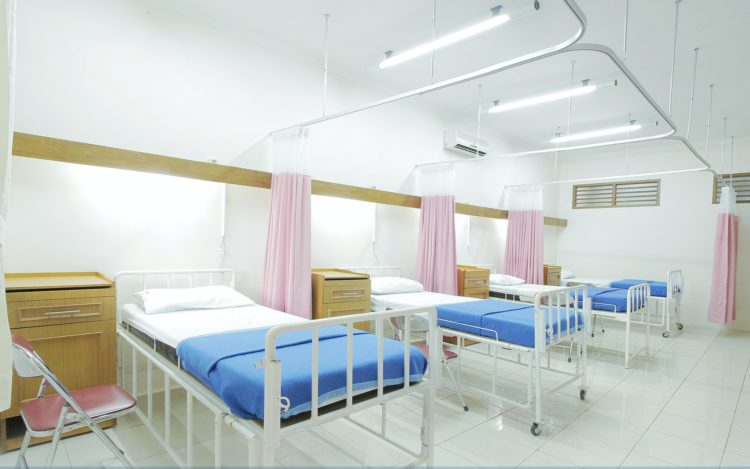
The COVID-19 pandemic underscored what disease experts already knew about how vital airflow and filtration are in preventing the spread of illness. Now, hospitals are reinventing their heating, ventilation and air conditioning (HVAC) systems to improve air quality and aid in recovery. Upgrades allow facilities to manage airflow more effectively and prevent diseases from spreading between patients.
Along with other pandemic innovations, like cleaning robots and remote patient monitors, new HVAC systems and design principles are helping hospitals fight COVID-19. The changes hospitals make to these systems may have an impact long after the pandemic is over.
How HVAC Design for Hospitals Is Helping Fight COVID-19
Even with the best cleaning practices in place, it’s not uncommon for disease and infections to spread in hospitals. This is especially true of illnesses that spread through the air via respiratory droplets, like COVID-19. Fortunately, the right HVAC strategies can limit the spread.
Most hospitals are using a combination of design techniques to fortify their HVAC systems. Some of these are simple upgrades — for example, better filters that can catch tiny biological particles that may cause disease, like viruses and bacteria. These filters can also make the HVAC system better capture larger particles, like dust and dander, helping to improve indoor air quality.
Others use more complex systems, like negative pressure environments, to limit the flow of air into isolation rooms. These are for patients who must be kept from the general hospital population, often due to the risk of infection. Keeping the pressure of these rooms lower than in the rest of the hospital limits the flow of potentially contaminated air. This prevents the spread of disease from the general population to isolated patients.
Other new design strategies ensure that return and exhaust air is vented outside the hospital rather than into areas like mechanical rooms. This makes sure air that may contain virus particles isn’t recirculated into any part of the facility.
In some cases, tools like digital cough particle circulation simulators were used to ensure HVAC systems properly carried recirculating air away from patients and staff. Some hospitals also considered the impact ventilators can have on HVAC systems. Ventilators require pure oxygen and medical-grade air — or air that is known to be free of contaminants like oil, dust and water. This is delivered to ventilators through specialized tubes built into the hospital infrastructure.
HVAC upgrades also provide an opportunity to expand the network of these tubes inside a hospital, allowing the building to support more active ventilators.
Preparing New Facilities With New HVAC Systems
Many hospitals are utilizing temporary HVAC systems to flexibly support new operations. One Ohio hospital worked with a local company to create a new HVAC system to cool a provisional lab used to diagnose patients during the coronavirus crisis. The temporary HVAC system provided heating and cooling that would keep the operational lab comfortable for workers and at the optimal temperature for lab equipment. Because heating and cooling systems were installed, the lab could be kept at optimal temperatures regardless of the season.
Altogether, these more effective HVAC design approaches make sure clean air enters the hospital from one place and is vented out once it has circulated through the building. The HVAC system also filters clean air before pulling it inside. This ensures the highest quality possible for the facility’s indoor air.
These strategies make for HVAC systems that are more costly to operate but could significantly limit the potential for disease to circulate through the hospital. It’s an expense in which the benefits far outweigh the negatives as far as public health is concerned.
How the COVID-19 Pandemic May Affect Hospital HVAC Systems
The pandemic is likely to have long-lasting effects on how hospitals design and operate their HVAC systems. These new systems will help doctors and nurses limit the spread of COVID-19 within hospitals — making it much easier for medical professionals to fight the virus.
Isolation areas may be more effective in hospitals that improve their HVAC system’s ability to create negative pressure in a room. These ventilation and air systems will probably also limit the spread of other diseases, possibly reducing the current workload hospital staff face.
The impact of these changes will also be positive for patients. These new HVAC systems will mean better air quality, improved ventilation and reduced risk of contracting a disease while in the hospital. Improved air quality may also mean faster recovery times and reduced bills, as a result.
Changes hospitals make to beat COVID-19 are also likely to influence future HVAC design decisions. In the long run, these upgrades could have a significant and positive impact on how health care facilities operate. They may significantly reduce the spread of disease and the frequency of hospital-acquired infections.
Emily Newton is the Editor-in-Chief of Revolutionized, an online magazine discussing the latest technologies changing our world.
















